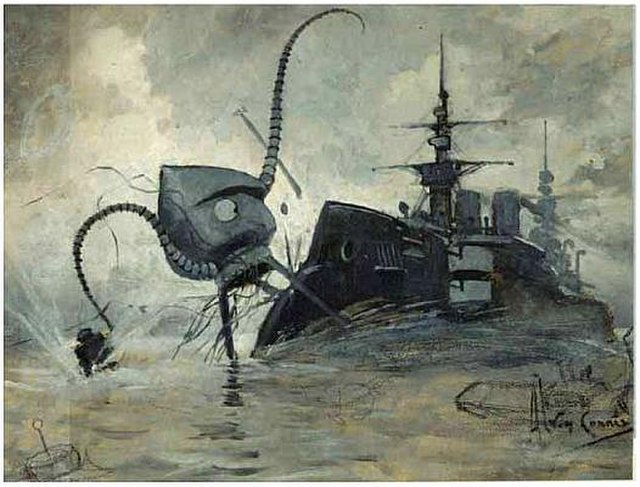Activist organisations often have difficulties with raising awareness around the problems that they make it their mission to solve. While lack of adequate expertise or access to funding that could be spent for information campaigns, are among reasons, there is a lot to be said about the messaging and methods we chose. What if we got inspiration from pop-culture and artworks that excell at translating the emerging tendencies and new technologies into the zeitgeist?
These are the droids you’re looking for
Together with SWPS University’s Institute of Humanities in Warsaw, Poland, we delved into exactly this inspiration! Students worked under the direction of the faculty on data collection and report Visions of AI in Popular Culture: Analysis of the Narratives about Artificial Intelligence in Science Fiction Films and Series. The Wikimedia assignment was to examine attitudes and winning narratives pertaining to the key narrative tropes:
- Conquest or progress? The spread of tech innovation as a political and economic tool
- Good teamwork and machines – how team forming and priorities are assisted, augmented, made possible through technology
- The pursuit of happiness – personal goals and way to get there in tech-saturated world
- Making a family – non-humans, human emotions, making a mistake, lasting emotional connections between humans and non-humans alike
- Which way do we go? New geographies, responses to the non-human other and their rationalisation
- Who is a good citizen? Political choice, rebellion, and going underground in tech-saturated society/or surveillance doctrine of governance ( / = to choose or to mix)
- Everything is going to be fine! Technology as a source of comfort and reassurance
Where no wo/man has gone before
So why are we so bent on rediscovering this? It has to do with what we identified as a narrow repertoire of narrative devices that are commonly in use. Insular language or overcomplicating the messaging to not miss “important nuance” are among most common issues. Often our campaigners need to feel they like their campaign even if they are not the ones that should actually be persuaded by it. On the other hand, there seems to be emphasis on an apologetic approach, where an appeal to the audience’s higher feelings is centred. In result many campaigns persuade people to “normalise old age”, “be a hero and adopt a poor, sick pet”, show outstanding compassion and “help feed a child”.
These campaigns are based on an ask for a bend of perspective and appeal to a narrow range of emotions and reflexes. Campaigns centred on the digital rights are mostly based on dissent (“say no to content filters”), resistance (“resistance is not futile”, as one sticker at 36C3 proclaimed), or action to rebound from power imbalance (“reclaim your face”). Again, the audience is asked for a favour.
We thought there is more that can be done to get people on board with our messages and campaigns.
We’re Not In The Business. We are The Business.
Pop culture operates on a buy-in principle. The buy-in in pop culture is not a stretch of goodwill, it is an invitation to be cool, to partake in excitement. This considers both the palatable and the difficult notions handy in renegotiating the social order.
It is no coincidence that Star Trek and Star Wars debuted during the consolidation of the Cold War efforts resulting in both sides of the conflict escalating the arms race into space. Even cautionary tales carry considerate allure – a condemnation of predictive policing and surveillance capitalism (Minority Report) had showed off motion-powered interfaces, smart houses, and autonomous cars with elegance, before these were cool.
Even animations for children are studded with subtle references to modern technologies, almost subliminally sneaking them into the everyday. A story of friendship and belonging in difficult times features a snugly robot to explain machine-assisted wellbeing on the side (Big Hero 6 from 2015 which coincidentally is a year of mass-market release of Echo and Alexa). A tale of following one’s dreams does not only make a comic relief out of facial recognition but also showcases US security measures at the US-Mexican border as a well accepted fact (Disney’s Coco, released in 2017 in the midst of the biggest wave of protection-seeking migration from Central America since 2014).
While the showcased tropes certainly are not ones that would become a focus of a campaign on digital rights, there is certainly learning to be taken from pixarisation of soft propaganda in pursuit of positive emotions and, in the end, surrender if not compliance. In order to do so, these and more examples need to be analysed and understood.
We hope that the report will offer an inspiration on ways we can tell stories and shape messages when speaking of digital rights.
Download the report:









